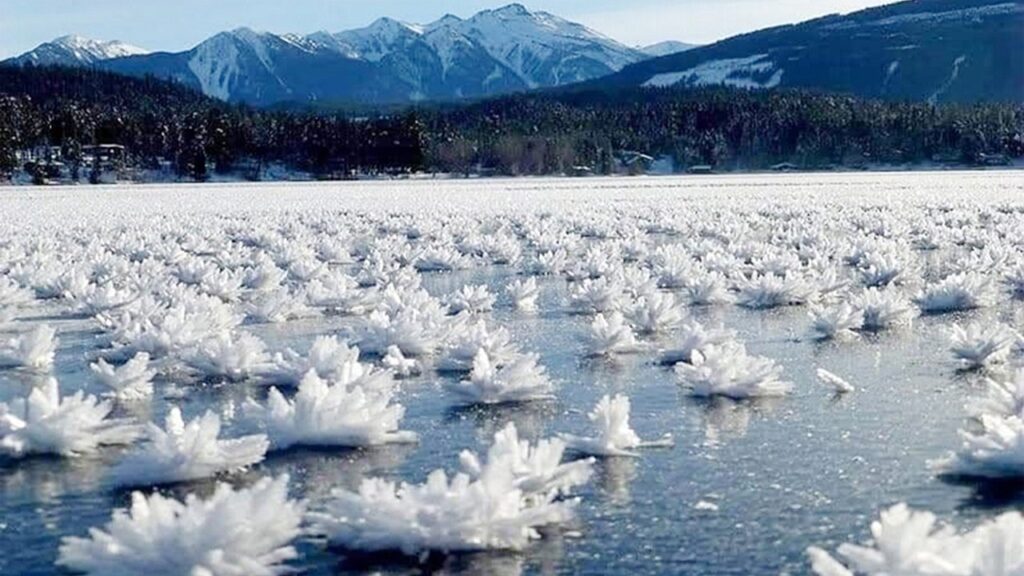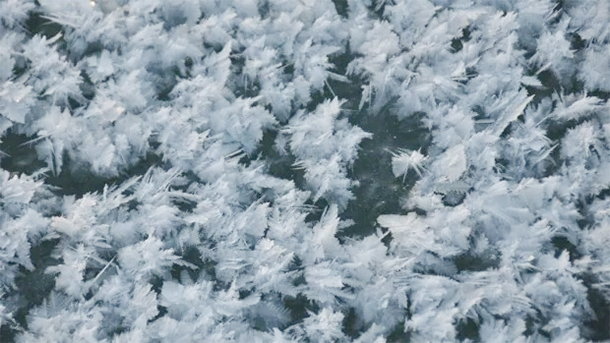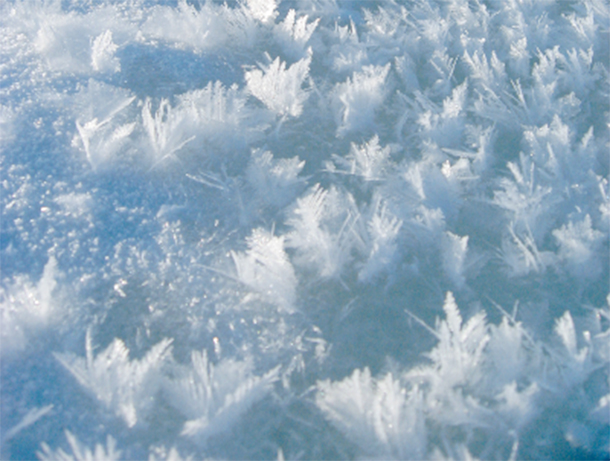
The Arctic Ocean, with its icy expanse and frigid temperatures, might appear inhospitable to anything resembling a flower. Yet, during the heart of winter, a breathtaking natural phenomenon unfolds—delicate, frost-like structures emerge on the frozen surface, earning the name “frost flowers.” While they aren’t actual flowers, these intricate ice formations bring an unexpected elegance to the stark Arctic environment.
How Frost Flowers Form
Frost flowers form under a precise combination of conditions. The air temperature must be significantly below freezing, while the ocean surface remains slightly warmer. This temperature contrast causes water vapor to rise from the sea, where it condenses and freezes almost instantly. The result is a cluster of thin, spiky ice formations that resemble delicate blossoms. Extremely fragile, frost flowers are easily disrupted by wind or movement, making them challenging to study up close. However, researchers have managed to collect samples, revealing that these icy structures are rich in salt and minerals from the ocean.

Frost Flowers’ Ecological Significance
Beyond their ethereal beauty, frost flowers serve an important ecological function in the Arctic. During the harsh winter months, when resources are scarce, these formations release nutrients into the surrounding environment. Studies show that frost flowers contribute organic matter to the ocean, supporting microscopic life forms such as bacteria. These microorganisms are vital to the Arctic food web, supporting larger species such as fish and seabirds. This intricate relationship underscores the deep interconnection of life in one of the Earth’s most extreme environments.
Frost Flowers Across the Globe

Although most commonly associated with the Arctic Ocean, frost flowers are not confined to this region. Similar formations have been observed in Antarctica and at high altitudes, such as the Tibetan Plateau and the Himalayas. Their occurrence in such diverse environments underscores their ecological and scientific significance, as well as the unique conditions required for their formation.
Ongoing Exploration of Frost Flowers
Research into frost flowers is still in its early stages, leaving much to uncover about their formation, composition, and ecological roles. Scientists continue to explore these icy structures to better understand how life adapts and thrives in some of Earth’s most hostile climates. These studies offer valuable insights into the resilience of ecosystems and the surprising ways in which nature sustains life under extreme conditions.

Conclusion
Though the Arctic Ocean may seem an unlikely place for anything to flourish, frost flowers showcase nature’s ability to create beauty and sustain life in even the harshest environments. These delicate, icy formations not only enhance the visual splendor of the Arctic landscape but also play a vital role in its ecosystem. As research progresses, frost flowers remain a source of fascination, reminding us that even in the coldest corners of the Earth, life finds a way to endure and inspire.




